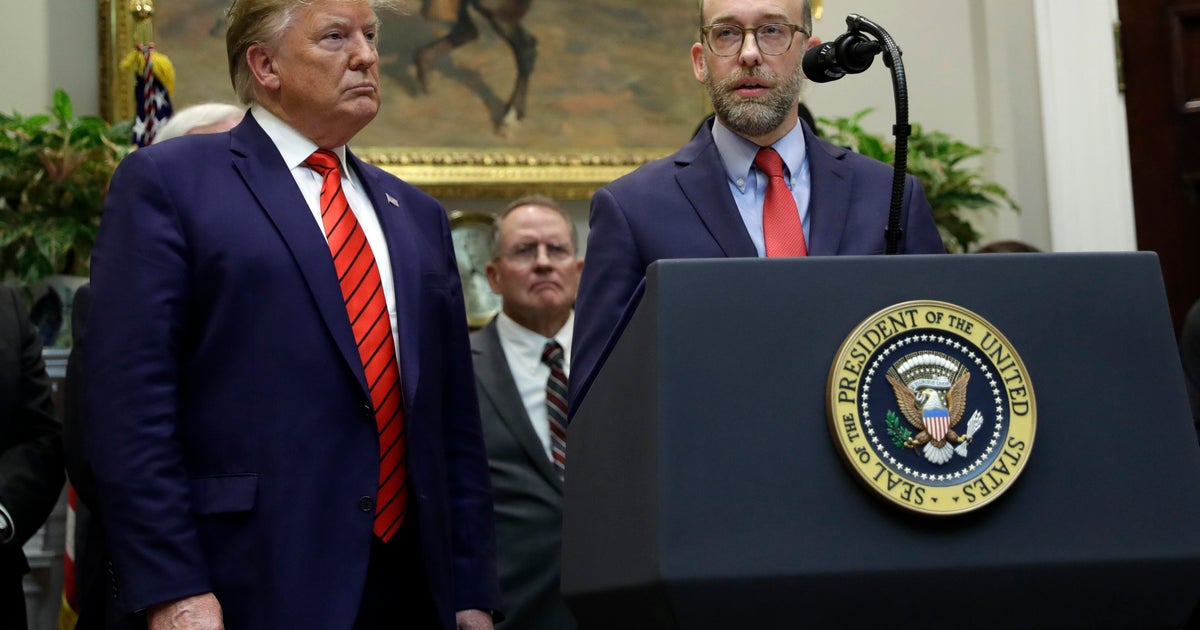NASA's James Webb Space Telescope revealing new details of the early universe
The earliest-known galaxy ever found was recently uncovered and confirmed by NASA's James Webb Space Telescope.
But astrophysicist Brant Robertson, who helped make the discovery as part of the JADES team, said that he doesn't expect the current record will hold for long. The telescope is so powerful that it's expected to find even earlier galaxies, he told 60 Minutes correspondent Scott Pelley.
"If you spend enough time, you could probably find any galaxy that ever formed in the universe," Robertson said. "It's really that powerful."
The telescope was launched on Christmas day in 2021 and is on a mission to find light from the first stars and galaxies. Since its successful deployment, it's captured stunning images of the moments before a star's death and galaxies dating back just a few hundred million years after the Big Bang.
Robertson, of the University of California, Santa Cruz, helps lead Webb's most ambitious mission, JADES, the JWST Advanced Deep Extragalactic Survey. That survey led to the discovery of a galaxy more than 33 billion light years away. It formed 320 million years after the Big Bang.
So far, Robertson's team has discovered two galaxies from the time when the universe was just 2 percent of its current age. One of them is forming stars at around the same rate as the Milky Way, even though it's 100 times less massive.
"So it really is like a hummingbird, the heartbeat of this galaxy is racing," Robertson said.
Astronomers and astrophysicists analyze the spectrum of light captured by Webb. They can measure how fast the galaxy forms stars, estimate the number of stars in the galaxy and much more.
Astrophysicist Erica Nelson of the University of Colorado, Boulder, is part of a team investigating what may be five giant galaxies that appear to have formed too big too quickly after the Big Bang.
"Either this is wrong or this is a huge discovery, and we think that it's a huge discovery," Nelson said.
More observations are needed, but Nelson says that, if confirmed, the discovery would break the theory of how the early universe formed.
"And that's the most exciting piece of this, of this telescope, of this remarkable instrument we put in space, is finding things that we didn't expect, that we can't explain," she said. "Because that means that we have to revise our understanding of the universe."
Webb will make even more discoveries over the coming years. Matt Mountain, who manages Webb's operations for NASA as the president of AURA, believes the observatory may last up to 25 years. With Webb, Mountain says, "there is no empty sky."
"On almost every image we're taking now, we see galaxies everywhere. I mean, we took a simple picture of a planet in our own system, Neptune. You know, it was just this beautiful orb just sitting there and we saw some rings. In the background are galaxies again," Mountain said. "It tells us that our universe is filled with galaxies. We knew this theoretically, but when you go out to the night sky, we're used to saying, 'Well, look up at the night sky, we see those stars.' We can no longer say that. We now have to say, 'Look up at the night sky and there are galaxies everywhere.'"
Webb's primary mission is to reveal the "let there be light," moment when the stars and galaxies first ignited after the Big Bang. The powerful $10 billion telescope, 25 years in the making, is considered the successor to the 32-year-old Hubble.
Webb has captured a direct image of a planet located outside of our solar system. It's been used to get extremely detailed images of thousands of never-before-seen young stars in a region known as the Tarantula Nebula. The telescope has also shown previously unseen stars and intricate detail in towering clouds of gas known as the "Pillars of Creation."
Since Webb captures infrared light, which is invisible to the human eyes, Alyssa Pagan and Joe Depasquale follow a scientifically rigorous method of taking data from Webb and matching it with wavelengths people can see to make the awe-inspiring images released to the public. Pagan and Depasquale are among the first people in history to see the images of the cosmic discoveries captured by Webb.
"It is a great honor and it does blow your mind every time," Pagan said.
Some of the discoveries leave even the experts starstruck. Purdue University astronomer Dan Milisavljevic studies exploded stars, which were the furnaces that forged the first heavy elements from a cosmos of simple helium and hydrogen. Webb reveals unprecedented detail at the centers of these explosions, Milisavljevic said.
"Every time there's a supernova explosion, it's producing the raw materials for life: the iron in our blood, the calcium in our bones, the oxygen that we breathe," Milisavljevic said. "All that is being manufactured in supernova explosions."
Even as it's helping astronomers and astrophysicists learn more, the Webb telescope is a reminder of how much we do not know about the universe, Mountain said. For instance, Mountain said, little is known about dark energy and dark matter, two elements believed to make up almost the entire universe.
"We are lucky if we even understand 4 percent of our universe today," Mountain said.





